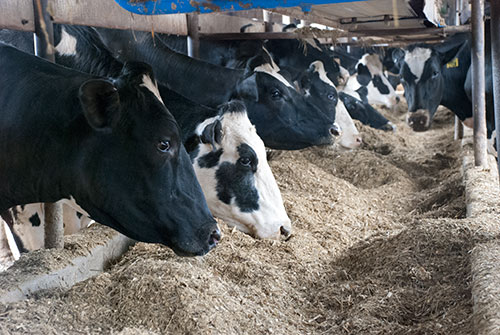
"Some cows need $2 less in feed daily to produce the same amount of product. Can we find these efficient cows?" Michigan State's Mike VandeHaar asked the audience at the joint annual meeting of the American Dairy Science Association and the American Society of Animal Science.
"Genomics enables us to select for new traits and make decisions earlier on old traits," stated VandeHaar, who is a scientific member of an ongoing multi-state consortium trying to unravel the genetics involving feed efficiency. In this research project, the group ultimately hopes to develop a selection index for feed efficiency. What might that index entail?
"We have learned that differences in digestibility (known as residual feed intake or RFI) probably accounts for 10 to 20 percent of the variation in a cow's ability to extract energy from feed," said VandeHaar to those at the Orlando, Fla., gathering. "As we research this issue, even though feed efficiency is important, we must remember that dry matter intake is directly related to milk production."
Body size is also an important parameter in the feed efficiency equation. However, it must not be taken out of proportion.
"Selection against body size may benefit feed efficiency but not milk income. Remember, selection for milk improves both," said VandeHaar.
"Our ultimate goal is a cow that efficiently converts feed to milk more efficiently," stated the Michigan State animal scientist.
As for the future, once the research concludes on the feed efficiency project, the scientists plan to fine-tune a selection index for the trait.
"Talk to geneticists if you have input on helping decide the cow of the future based on this research," encouraged VandeHaar. "Once feed efficiency gets incorporated into genetic selection, we are going to start making changes to genetic selection rather quickly."








